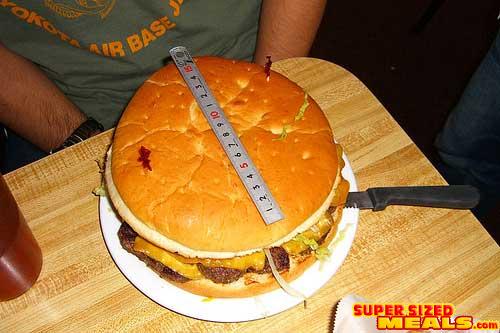
Once we actually made it to sunny Florida, we rested for a bit in our 7th floor hotel room and decompressed. We got our bearings and walked the quarter mile to an area called Downtown Disney. It's a complex of shops and restaurants that enables people to blow tons of money on Disney merchandise without having to actually go to the park. As everything seems to in Florida, the place is centered around a lake. We walked to the dock and took a 20 minute ferry ride to one of the Disney resorts, Old Key West where we ate at a place called Olivia's. We figured we could afford to eat overpriced Disney fare once so we went for it. Prime rib for me, lime chicken for Suzanne. Kid food for the kids. Our waiter was named Brahim and he was from Morocco.

After the meal, we went back to Downtown Disney and wandered through the cavernous gift shops. There was also a stage area and, without question, the highlight of the entire day was the kids dance party that we held there. This schlubby looking guy with a ball cap, glasses, and a headset microphone led a mob of people (mostly young kids but also teenagers and "feeling young again" parents) through dance moves to the tunes of "Car Wash," "Respect," "Hey Ya," and others. Why was this the highlight, you ask? Well, let me tell you, my friend, my 5 year old loves to shake it. That's right, shake it. At first she was just sitting on my lap and trying to be subtle about the fact that she was following along with schlub-man up front. I asked her if she wanted to go down to the pint-sized mosh pit and she said no. But within 5 minutes, she's jumped up and went down there entirely on her own and was completely enveloped in the kid's dance party experience for the next twenty five minutes. It was the funniest, cutest thing I'd ever seen. This was good but the best part was when we sent Older Sister down to retrieve Younger Sister because it was getting late. We watched Maryn walk down, find Avery, talk into her ear, and then, almost instantly, get swept up in the rapture of Aretha Franklin's R-E-S-P-E-C-T, and start dancing too. It was like she'd gotten assimilated by a herd of dancing Borg or something. One minute she's the responsible older sister and the next she's shaking it. That's right, shaking it. It was hysterical.

We eventually pulled them away from the dancing, bought some Ghiardelli's hot chocolate (because it was a little chilly), and walked back to the hotel.
Day Two: Breakfast at Perkins and then off to the Magic Kingdom. It was bright and warm. 78 degrees feels pretty hot when there's 100% humidity and you just came from snow and 34 degrees.
Keep in mind, I'd been to Disneyland before when I was a kid and as a teenager. Suzanne, on the other hand, had never been to Disney-anything. It was all new for her and the girls so it was a thrill to be with them when they saw the ornate, cleverly laid-out Main Street U.S.A. and to hear Maryn shriek as she pointed, "There's Cinderella's castle!" It's cool to be around for stuff like that.

We spent a lot of time in Tomorrowland that day without doing a whole lot. It was a Saturday and, in retrospect, I realize that's probably not the best day to to to the park. Long lines were everywhere and, at times, it was hard just to walk. Avery and I rode the Astro Orbiter while our more weak-stomached companions, Suzanne and Maryn, went on the Carousel of Progress. After that, we made the very fateful mistake of taking the girls on Stitch's Great Escape. The whole premise is that you're a guard in the prison where Stitch, the blue dog-like alien from Lilo and Stitch, is being held. He escapes and causes mayhem. There are long periods in complete darkness, unexpected loud noises, spraying water, and at one point, the smell of chili dog burps being blown in your face. (I'm not kidding.) Our little guide book said the ride was mediocre and might frighten small children. Let this be a lesson to us all: believe your guidebook. Do not disregard what it tells you. The girls came out of there crying, screaming, and pretty much traumatized for the rest of the trip. From that point on, right when the line to a ride turned a corner to the unknown, Maryn would start crying and freaking out. It wasn't cool.
We bought a hot dog, chips, and a drink for each of us for lunch to the tune of 30 dollars and moved on to the Toon Town Fair. (We did ride the Tea Cup ride on the way though and it was pretty sweet. It was a precursor to what I discovered the next day -- the older rides are better than the newer rides.) We toured Mickey's house, Minnie's house, Donald's boat, and took the train around the park before returning to Toon Town. Both girls refused to go on Goofy's Barnstormer which is a small roller coaster for kids. There was no convincing them so we moved on.
It doesn't seem like we did all that much but it did take us five or six hours to get through all this. We ended the day by going to Mickey's PhilharMagic which is a computer generated 3-D movie about Donald Duck chasing the wizard's hat from Fantasia through four or five Disney movies. The 3-D effects were incredible and we all loved it. We figured that was a good note to end on so we headed out.
(Heading out involves a lot down there. We walked to the monorail that took us to the transportation center that brought us a bus that drove us to our hotel. The whole park-to-hotel experience took an hour with all the walking and waiting.)
Dinner at TGIFriday's and sleep.






















